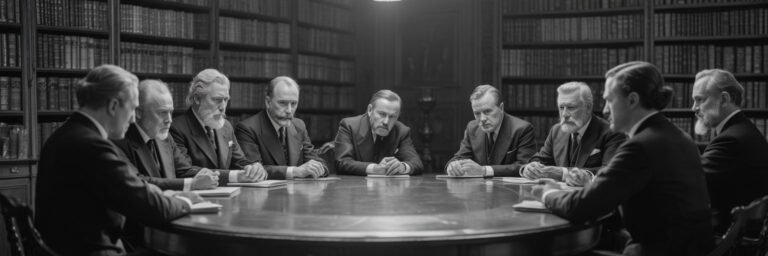INTRODUCTION
The fabric of civilization is woven with the threads of history; a tapestry rich and intricate, constantly evolving with the passage of time. Each twist, each turn, each significant milestone adds another colorful stitch to the story of our collective past. Among the loom’s threads, cities, monumental and monumental, pulsate with historic narrative and transform into living archives of human curiosity and ambition. Unveiling these cities’ narratives and examining their key moments can offer us a deeper comprehension of the evolution of civilizations and our shared humanity. Our journey through the timeline of history will traverse epochs, continents, and civilizations, exploring cities that have profoundly shaped human destiny and left indelible imprints on the course of history.
HISTORICAL BACKGROUND
Our journey begins in 4500 BC, with the establishment of the city of Uruk in ancient Mesopotamia, often referred to as the cradle of civilization. As the world’s first city, Uruk was a testament to human inventiveness, and its cuneiform tablets were the earliest building blocks of scholarly pursuits.
In the Indus Valley, around 2500 BC, Harappa and Mohenjo-Daro demonstrated advanced urban planning, characterized by well-ordered streets and excellent sanitation systems, that put modern cities to shame. Meanwhile, Athens, established in 700 BC, embraced philosophy and democracy, molding the socio-political landscape of the world and forever etching its mark on intellectual history.
Heralding a new era, Rome, founded in 753 BC, expanded into a vast empire, underscoring the power of political organization and military prowess. Baghdad, established in 762 AD, was a beacon of knowledge during the Islamic Golden Age, its scholars advancing the fields of mathematics, astronomy, and medicine.
THEORIES AND INTERPRETATIONS
The rise and fall of these cities have sparked myriad theories and interpretations. While some scholars like V. Gordon Childe emphasize technological advancements and economic factors in the development of early cities like Uruk, others like Karl Wittfogel propound ‘hydraulic despotism’ theories, citing control over irrigation systems as the primary reason for these cities’ rise.
The celebrated historian Arnold Toynbee, in his “Study of History,” suggested that the growth of civilizations and their cities is influenced by ‘challenge and response’ dynamics. For example, the challenges of geographical location and external threats have required cities to adapt, innovate, grow, and sometimes even perish.
The fall of Rome and its transformation into the modern city offers an intricate tapestry of theories, ranging from the intervention of barbarian invasions, to socio-economic decay, to the spread of Christianity.
MYSTERIES AND CONTROVERSIES
Like any complex historical narrative, the histories of these cities are not without their mysteries and controversies. The sudden decline and disappearance of the Indus Valley Civilization, leaving behind the enigmatic ruins of Mohenjo-Daro and Harappa, still baffle historians and archaeologists.
Rome’s eruption into an empire has spurred spirited discourses among historians. While some argue for a planned, calculated expansion, others contend for an accidental empire born out of defensive strategies.
SYMBOLISM AND CULTURAL SIGNIFICANCE
Every historic city carries immense symbolism and reflects diverse cultural significances. Athens, for instance, embodies the spirit of democracy and intellectual pursuit. Rome stands as a symbol of imperial power and architectural grandeur, while Baghdad in its glorious past symbolized the zenith of Islamic Golden Age.
Modern-day Uruk, Harappa, and Mohenjo-Daro serve as reminders of our advanced early civilizations, testifying to their ingenuity, resilience, and vision. Each of these cities holds up a mirror to the civilizations they symbolize, reflecting the cultural, intellectual, and ideological landscape of their times.
MODERN INVESTIGATIONS
Modern investigations into these historic cities—ranging from archaeological excavations to sophisticated remote-sensing technologies—continue to unravel the layers of history buried within their heart. New revelations from the city of Uruk have illuminated the earliest origins of writing and administration.
Ongoing archaeological excavations at Harappa and Mohenjo-daro are investigating the mystery shrouding the Indus Valley Civilization’s disappearance. Recent excavations in Rome have unveiled a complex, interconnected network of underground tunnels, shedding light on its military and infrastructural prowess. In the ruins of Baghdad, historians strive to reconstruct the intellectual pursuits that marked the Islamic Golden Age.
LEGACY AND CONCLUSION
These prehistoric and historic cities have left the world a lasting legacy. Uruk, Harappa, and Mohenjo-daro have shaped our understanding of civilization’s beginnings, teaching us that complexity, orderliness, and creativity have early roots. Athens introduced concepts of democracy and philosophy still cherished today. Rome’s legal structures continue to influence contemporary legal systems, and its architectural marvels are revered as wonders of the ancient world. Baghdad symbolizes an intellectual destination, reminding society of the human capacity for wide-ranging inquiry.
In conclusion, these cities provide chapters in the narrative of human endeavor, achievement, and ambition. They are the milestones pointing to humanity’s resilience, innovation, and ceaseless pursuit of knowledge. As Alfred North Whitehead declared, “The safest general characterization of the European philosophical tradition is that it consists of a series of footnotes to Plato,” so too are modern cities mere footnotes, coloring in the vibrant history depicted by these ancient cities.






